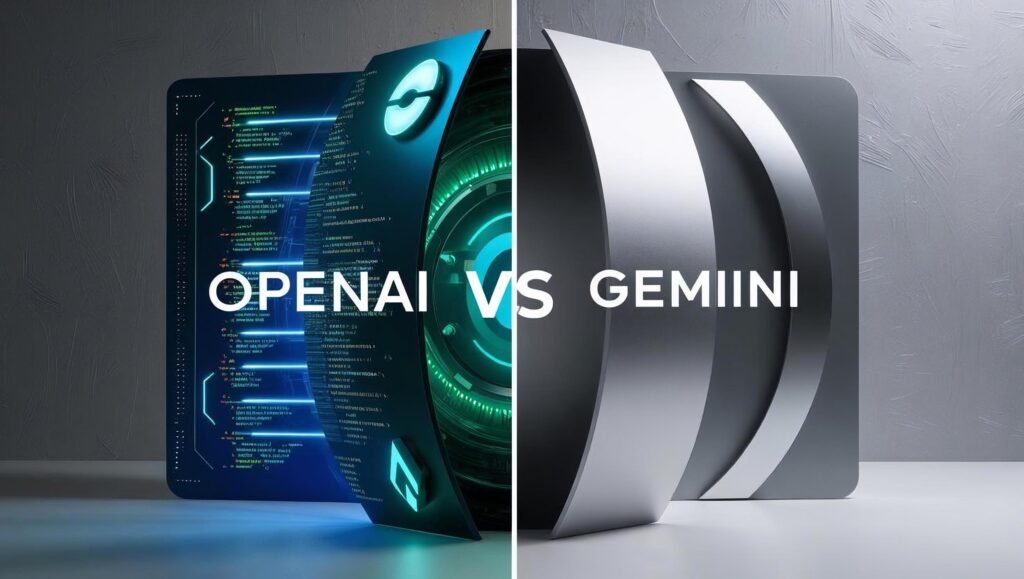Understanding OpenAI Pricing 2025: Key Features of GPT-4o
As of 2025, OpenAI’s GPT-4o continues to set a high standard for AI language models, not only in performance but also in pricing structure. OpenAI has designed a tiered pricing model that caters to various user needs, promoting accessibility while ensuring robust features that appeal to developers and businesses alike.
OpenAI Pricing Structure
OpenAI’s pricing for GPT-4o is strategically established to provide clients with both flexibility and predictability in cost management. The base pricing starts at approximately OpenAI Pricing at $0.03 per 1,000 tokens for text generation, making it competitive compared to market standards. This flat rate allows developers to estimate their costs easily, which is crucial for scaling applications and managing budgets.
Key Features of GPT-4o
The GPT-4o model offers enhanced features, including improved natural language understanding and generation, context retention capabilities, and refined conversational skills. These advancements not only improve user interaction but also expand potential applications across various sectors, from content generation to customer support and education. For more insight into these innovations, check out Features and Innovations of GPT-4o.
Comparative Insight: GPT-4o vs. Gemini API Cost
When comparing OpenAI pricing to that of the Gemini API, it’s essential to recognize the key differences in offerings and pricing structures. Gemini, while promising similar capabilities, may have different costs and feature sets which influence user decisions based on specific needs. For a deeper analysis, refer to our article on Gemini AI vs. GPT-4o Comparison.
Overall, the investment in GPT-4o can lead to significant advantages, especially for businesses looking for versatility and innovation in their AI applications. As the landscape of AI continues to evolve, staying informed about AI API pricing comparison will be crucial for leveraging these technologies effectively.
📊 OpenAI vs Gemini – API Rate Card Comparison (May 2025)
| Type | Model / API | Provider | Pricing | Notes |
|---|---|---|---|---|
| Text (LLM) | GPT-4 Turbo | OpenAI | $0.01 / 1K input tokens $0.03 / 1K output tokens | Latest GPT-4 variant, optimized for chat/completions |
| GPT-3.5 Turbo | OpenAI | $0.001 / 1K input tokens $0.002 / 1K output tokens | Cost-effective, widely used | |
| Gemini 1.5 Pro | $0.0005 / 1K input tokens $0.0015 / 1K output tokens | High-performance multimodal model | ||
| Gemini 1.5 Flash | $0.00025 / 1K input tokens $0.0005 / 1K output tokens | Fast and low-latency variant | ||
| Image Gen | DALL·E 3 | OpenAI | ~$0.04 per image (varies with resolution) | Integrated with ChatGPT, API via OpenAI |
| Imagen 2 | Not publicly priced (experimental, available in Vertex AI Studio) | Limited availability; focus on enterprise | ||
| Vision (Image → Text) | GPT-4 Turbo (Vision) | OpenAI | Included in GPT-4 Turbo rate | Visual question answering, OCR-like tasks |
| Gemini 1.5 Pro (Vision) | Same rate as text ($0.0005 / $0.0015) | Strong vision capabilities, multimodal context | ||
| Audio → Text | Whisper (via API) | OpenAI | ~$0.006 / minute | Automatic speech recognition (ASR) |
| Gemini (Speech API) | ~$0.006–$0.009 / minute (Speech-to-Text API) | Tiered pricing depending on region and model | ||
| Text → Speech | OpenAI (TTS API) | OpenAI | $0.015 / 1K characters (Standard) $0.030 / 1K characters (HD) | Realistic voices |
| Google Cloud TTS | $4.00 / 1M characters (Standard) $16.00 / 1M (Wavenet) | Price depends on voice type and region | ||
| Video Gen | Sora (waitlist only) | OpenAI | Not publicly priced | Early access only |
| Gemini (video via DeepMind or internal tools) | Not available for public use (experimental) | No commercial access at this time |
Exploring Gemini API Cost: What You Need to Know
When considering the Gemini API cost, it’s crucial to understand the diverse pricing models that accompany this AI technology. Gemini, developed by Google DeepMind, has implemented a tiered pricing structure, offering flexibility to developers and businesses based on their needs. This approach allows users to select a plan that aligns with their usage patterns and budget considerations.

Pricing Models of the Gemini API
Gemini’s pricing typically includes different tiers based on the number of requests or usage frequency. For instance, developers can opt for a pay-as-you-go model that charges based on the API calls made, beneficial for those expecting variable workloads. Alternatively, a subscription model may provide a fixed number of requests per month for a set fee, making it ideal for businesses with consistent usage patterns.
Additionally, enterprises can access custom plans tailored to their specific requirements, which may encompass added benefits such as dedicated support or enhanced performance levels. This tiered methodology enables organizations of various sizes to adopt Gemini’s capabilities without incurring excessive costs.
Feature Comparison Against Other APIs
In comparing the Gemini API pricing with competitors like OpenAI, it’s essential to evaluate both performance and cost-effectiveness. OpenAI offers its own pricing structure, mainly centered around its different model capabilities, affecting operational expenses depending on the utility of the API for specific tasks. For a detailed examination of how Gemini stacks up against OpenAI’s diverse offerings, refer to our comparative analysis of Gemini AI vs. GPT-4o.
Moreover, understanding the full suite of features available at various price points becomes paramount when juxtaposing against combined functionalities, such as those found in OpenAI’s DALL-E. This comprehensive approach, particularly with solutions involving creative applications, might justify a higher cost depending on usage requirements.
Conclusion
Determining the right API solution, whether opting for Gemini or OpenAI, should hinge on a comprehensive understanding of the pricing models and unique features that each offers. By aligning your project requirements with the respective pricing structures, you can strategically manage costs while leveraging cutting-edge AI technologies for your applications. For further insights on AI API pricing comparisons, see our comprehensive guide on AI API Pricing Comparison.
AI API Pricing Comparison: OpenAI vs. Gemini
When examining the landscape of AI models, it’s essential to consider the pricing structures and features offered by major players like OpenAI and Gemini. This comparison aims to provide a detailed look at how OpenAI’s GPT-4o stacks up against Gemini, specifically focusing on their costs and capabilities for businesses and developers in 2025.
OpenAI Pricing 2025
OpenAI has structured its pricing to accommodate various user needs, launching tiers that cater to different consumption levels. The “Pay as You Go” model, which charges based on the number of tokens processed, is particularly helpful for smaller enterprises or individual developers who may not require extensive usage. According to OpenAI’s official pricing page, users can expect costs to start at approximately $0.03 per 1,000 tokens for the standard GPT-4o model, with potential savings for higher volumes. Additionally, OpenAI offers packages like monthly subscriptions that can reduce costs for businesses needing consistent access.
Gemini API Cost
On the other hand, Google’s Gemini API pricing structure is also competitive. As of 2025, Gemini’s costs begin at around $0.02 per 1,000 tokens, with incremental pricing depending on usage levels. Like OpenAI, Gemini provides tiered subscriptions that include different access levels to its model features, with the higher tiers unlocking additional capabilities such as enhanced response generation and faster processing times. For developers involved in natural language processing tasks, the price difference may encourage exploring Gemini for its value proposition in conjunction with its robust capabilities.
Feature Comparison
While pricing is a crucial factor, the features offered by each API significantly impact their overall value. OpenAI’s GPT-4o has distinguished itself with advanced multitask learning and fine-tuning capabilities, making it suitable for various applications from chatbots to academic research. In contrast, Gemini’s strengths are highlighted in its integration with Google’s ecosystem, ensuring developers can leverage existing data infrastructures effectively. These differences are explored further in our analysis of the two models in Gemini vs. GPT-4o: A Comprehensive Analysis.
For businesses looking to scale their AI applications, understanding the nuances of both pricing structures and the core competencies of each model will guide informed decision-making. In an environment where AI adoption continues to surge, choosing the right API can significantly influence the success of technological strategies in 2025 and beyond.
Choosing the Right API: OpenAI GPT-4o vs. Gemini 1.5 Pro
Understanding OpenAI Pricing 2025
When selecting between the OpenAI GPT-4o and the Gemini 1.5 Pro, evaluating the OpenAI pricing in 2025 is crucial. OpenAI employs a tiered pricing model, allowing users flexibility based on their API usage. Prices may differ based on the number of tokens processed, supporting various applications from casual queries to complex natural language tasks. The pricing tends to be transparent, with metrics clearly defined on their official documentation. Users should consider their anticipated usage level and the overall budget allocated for AI services.
Evaluating Gemini API Cost
On the other hand, the Gemini 1.5 Pro boasts a competitive pricing structure that seeks to challenge established players like OpenAI. Understanding the Gemini API cost requires analyzing how it functions in different usage scenarios. Gemini provides various pricing brackets, generally focusing on the functionality users require, whether that be text generation, image processing, or something more niche. This flexibility can be appealing for developers looking for specific features without incurring unnecessary costs.
AI API Pricing Comparison Factors
When performing a comprehensive AI API pricing comparison, several factors should be prioritized:
- Usage Level: Calculate how many requests your application might need, as both platforms price based on request frequency and complexity.
- Performance and Features: Consider the specific capabilities each API offers. OpenAI may excel in text generation, while Gemini could present superior capabilities in multimodal tasks.
- Customization Needs: If your project requires advanced customization, factor in how easily each API can adapt to your unique requirements.
- Support and Documentation: Efficient support and comprehensive documentation can significantly enhance the development experience, making it easier to troubleshoot and innovate.
- Long-term Strategy: Consider the evolution of both platforms. How do their past updates hint at future improvements and pricing changes? Staying informed about the latest developments, such as enhancements in OpenAI that may affect GPT-4o features, is essential for making the right choice.
By carefully considering these factors and comparing available alternatives, developers can make well-informed decisions on whether to go with OpenAI or Gemini for their projects.



